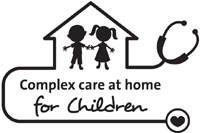There is an increasing awareness of the importance of safety in providing care at home to children with medical complexity. Until recently, most of the available information has concerned:
Children admitted to hospitals or other healthcare institutions,
Adults (especially the elderly).
While some of the information for these two groups is applicable to children at home, there is still a lot of work that needs to be done to better understand how we can, together, improve the safety of care at home for children with medical complexity (and their caregivers!).
There are many different aspects to safety. Here, we provide information on:
Medication safety
Power failure
Strangulation
See the Patient Safety Institute of Canada for more information.
A section dedicated to medication safety is found here.
So much of the care that is provided to children with medical complexity requires electricity – to charge devices and batteries and also to maintain refrigeration for storage of medication and nutritional supplements. Many children with complexity are also fragile and do not tolerate extremes of temperatures well; thus, the absence of air conditioning or heating may have a significant impact on the health of the child.
Speak with your child’s healthcare team to make a specific plan that matches your child’s care priorities. Talk with other parents also for creative problem solving, like purchasing a marine battery with an extended charge. General suggestions include:
- Alert utility companies (water, electricity, gas, telephone) that your child relies on these services for medical purposes. This may prevent an abrupt disconnection of services but does not guarantee a faster restoration of power in the event of an emergency.
- Notify local police, fire department, ambulance providers that your child has special needs. Most agencies have a registry of vulnerable citizens and have standard forms so that you can specify your child’s special needs.
- Be prepared with a back-up supply of electricity/energy. Depending upon the equipment that your child requires, you may wish to obtain extra batteries or a generator. In the event of a prolonged power failure, know where you can take your child for ongoing care, such as a local hotel with sufficient generators or the hospital.
- For short term refrigeration, have ice packs in the freezer and a cooler on hand.
- Keep an appropriate back up supply of all materials that your child requires. If your child uses an oxygen concentrator, have backup oxygen tanks, for travel and also for power outages.
Strangulation, due to entanglement by medical tubing and cords is a rare but serious risk for many children who receive therapies via tubings or who are connected to monitors with cords. Most hospitals have safety guidelines in place but recommendations for care at home have not been published, to our knowledge. Until evidence based guidelines are available, common sense recommendations include:
Being aware of which child is at higher risk.
Routine preventive strategies.
Children at a higher risk of entanglement include those:
0-4 years of age,
Very active, restless or combative,
With a neurocognitive impairment or an altered level of consciousness,
With impaired communication abilities.
Routine preventive strategies include:
Parental awareness of risk.
Removal of unnecessary tubings and cords, if possible.
Secure cords and tubings through the child’s clothing; for example, thread IV tubing through the leg openings of pyjamas.
Avoid the use of extension tubing wherever possible.
Talk with your child’s healthcare team for more prevention strategies.








